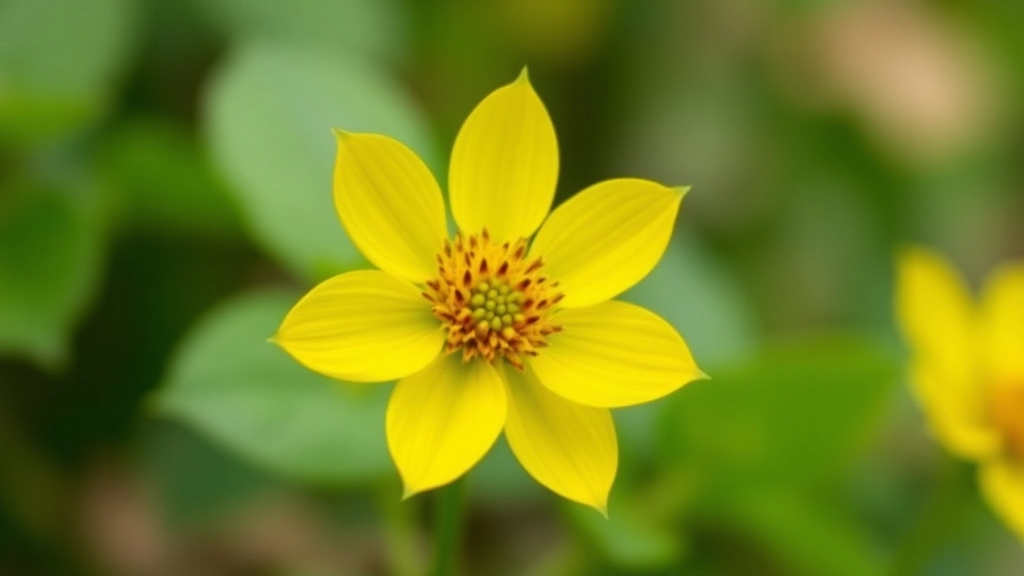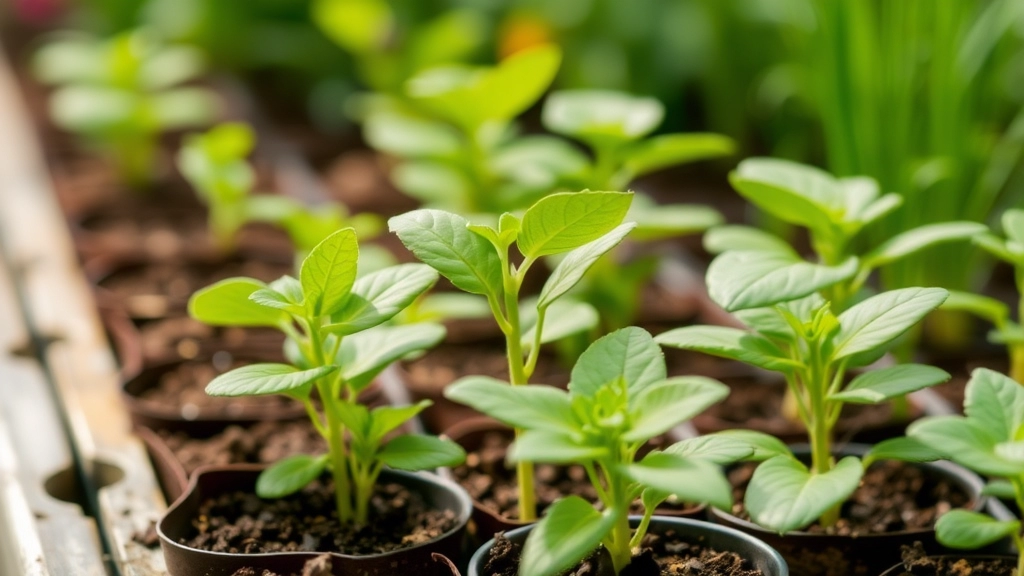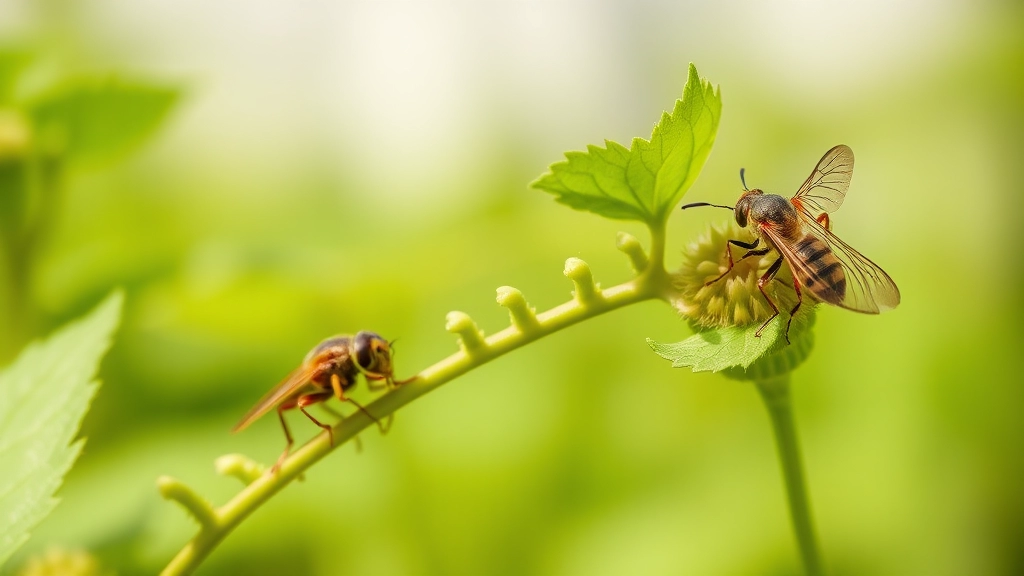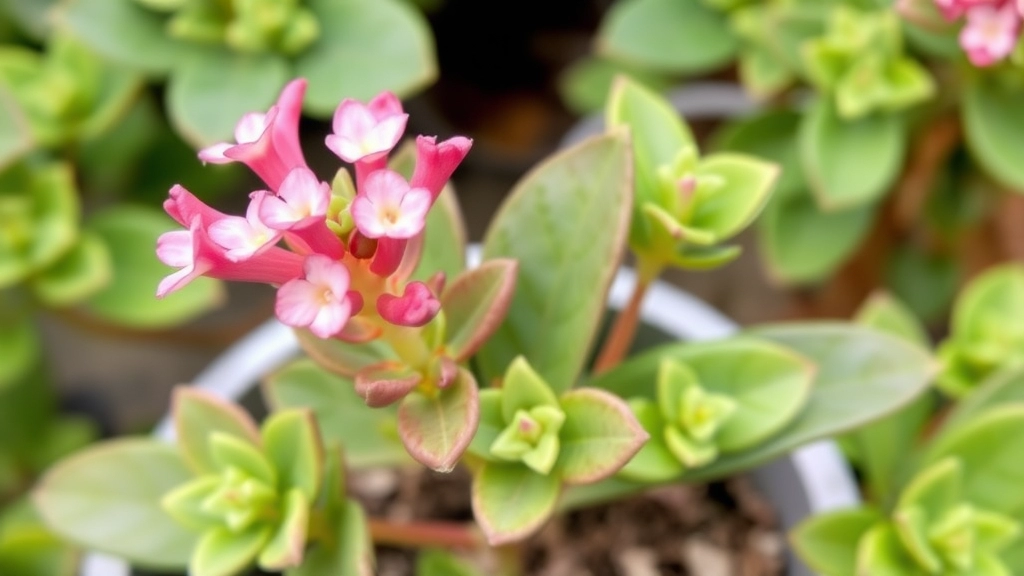Kalanchoe pinnata
Kalanchoe pinnata, a remarkable succulent with a fascinating array of features, has captured the attention of plant enthusiasts and researchers alike. This unique plant, known for its ability to sprout new life from its leaves, offers more than just visual appeal. From its diverse medicinal properties to its adaptability in various climates, Kalanchoe pinnata stands out as a true marvel of nature.
In this comprehensive guide, we’ll explore the botanical characteristics of Kalanchoe pinnata, delve into its rich cultural significance, and uncover the latest scientific findings about its potential health benefits. Whether you’re a curious gardener, a natural health advocate, or simply intrigued by this extraordinary plant, you’ll find valuable insights into the world of Kalanchoe pinnata. Let’s embark on this green journey together!
Botanical Description of Kalanchoe pinnata
Ever seen a plant that looks like it’s got mini plants growing on its leaves? That’s Kalanchoe pinnata for you.
This succulent’s a real head-turner. Here’s why:
- It’s got thick, fleshy leaves that store water like a champ
- The leaves are arranged in opposite pairs along the stem
- Each leaf is scalloped or “pinnately” lobed (hence the name “pinnata”)
- You’ll spot tiny plantlets growing along the leaf margins – nature’s way of saying “clone me!”
The stems? They’re sturdy and can grow up to 1.5 meters tall. Not too shabby for a succulent.
When it flowers, Kalanchoe pinnata puts on a show:
- Bell-shaped blooms in clusters
- Colors range from greenish-yellow to pink or red
- Flowers hang down like little lanterns
Here’s a cool fact: the leaves change shape as the plant matures. Young leaves are simple, but older ones get more complex.
Kalanchoe pinnata’s a survivor. It’s adapted to dry conditions, making it a low-maintenance dream for plant lovers.
So, next time you spot a plant with baby plants on its leaves, you might just be looking at Kalanchoe pinnata. Pretty neat, right?
Common Names and Synonyms

Alright, let’s dive into the world of Kalanchoe pinnata’s many names. Trust me, this plant’s got more aliases than a secret agent!
The Name Game
First off, you might hear folks calling it “air plant” or “life plant.” Why? Well, this little green miracle has a knack for sprouting new plants from its leaves â pretty cool, right? In fact, the Kalanchoe pinnata air plant is known for its unique ability to propagate easily.
But wait, there’s more:
- Cathedral Bells
- Miracle Leaf
- Goethe Plant
- Mexican Love Plant
- Leaf of Life
And that’s just scratching the surface!
A Rose by Any Other Name…
Now, if you’re feeling fancy, you might come across some scientific synonyms:
- Bryophyllum pinnatum
- Cotyledon pinnata
- Verea pinnata
But let’s be real â who’s got time for all that Latin? Stick with the common names, and you’ll be just fine.
Cultural Nicknames
Depending on where you are in the world, Kalanchoe pinnata might go by:
- Wonder of the World (Caribbean)
- Good Luck Leaf (China)
- Panfuti (India)
The Takeaway
Bottom line? Whether you call it Kalanchoe pinnata or “that weird plant that grows babies,” we’re all talking about the same awesome species. Just remember, if someone mentions any of these names, they’re probably chatting about our good ol’ Kalanchoe pinnata. If you’re interested in its medicinal properties, you might want to check out how Kalanchoe pinnata is used for kidney stones.
Geographic Distribution and Habitat
Ever wondered where this cool plant comes from?
Kalanchoe pinnata’s got quite the travel history.
Originally from Madagascar, it’s now a globetrotter.
You’ll find it chilling in tropical and subtropical spots all over.
From Africa to Asia, and even parts of the Americas.
It’s like that friend who’s been everywhere, you know?
Where does it feel most at home?
Well, K. pinnata’s not fussy, but it does have its preferences:
- Warm climates (no surprise there)
- Well-drained soils
- Plenty of sunlight
It’s often spotted hanging out on:
- Rocky hillsides
- Forest edges
- Coastal areas
In some places, it’s even considered a bit of a troublemaker.
Yeah, it can get invasive if left unchecked.
But don’t let that put you off.
With the right care, it’s a great addition to any garden.
Just keep an eye on it, yeah?
Kalanchoe pinnata’s adaptability is pretty impressive.
It’s why you’ll find it in so many different places around the world.
Cultivation and Care Tips

Alright, let’s dive into how to grow and care for Kalanchoe pinnata like a pro. Trust me, it’s not rocket science, but there are a few tricks up my sleeve that’ll make your life easier.
Soil and Potting: What’s the Deal?
First things first, this plant isn’t fussy about soil. But here’s the kicker – it hates wet feet. So, what’s the move?
- Go for a well-draining potting mix
- Add some perlite or sand to improve drainage
- Choose a pot with drainage holes (non-negotiable!)
Light and Temperature: Finding the Sweet Spot
Kalanchoe pinnata loves the sun, but too much of a good thing can be bad. Here’s the lowdown:
- Bright, indirect light is the golden ticket
- A few hours of morning sun? Perfect
- Protect from harsh afternoon rays
- Ideal temp range: 60-75°F (15-24°C)
Watering: Less is More
Here’s where most people mess up. These succulents are drought-tolerant champs. Overwatering is their kryptonite. So, what’s the game plan?
- Let the soil dry out between waterings
- Water deeply, then forget about it for a while
- Cut back on watering in winter
Fertilizing: Keep it Simple
Kalanchoe pinnata isn’t a heavy feeder. No need to go overboard here.
- Use a balanced, water-soluble fertilizer
- Feed once a month during growing season
- Skip fertilizing in winter
Pruning: Keeping it Tidy
This plant can get a bit wild if left unchecked. A little trim now and then keeps it looking sharp.
- Pinch off leggy growth to encourage bushiness
- Remove dead or yellowing leaves
- Prune after flowering to maintain shape
Common Mistakes to Avoid
Look, we’ve all been there. But let’s learn from others’ slip-ups:
- Overwatering (seriously, it’s the #1 killer)
- Using pots without drainage
- Placing in direct, scorching sun
- Forgetting to rotate the plant (hello, lopsided growth!)
Remember, Kalanchoe pinnata, also known as the miracle leaf, is pretty forgiving. If you mess up, it’ll usually bounce back. Just keep an eye out, adjust as needed, and you’ll be golden. Happy growing! And if you’re interested in other Kalanchoe varieties, check out the different types of Kalanchoe tomentosa for some variety in your succulent collection.
Medicinal Uses and Health Benefits
Kalanchoe pinnata: Nature’s healing powerhouse
Ever wondered if plants could be your personal health guru? Well, Kalanchoe pinnata might just be that green superhero you’ve been looking for.
Let’s dive into the good stuff this plant’s packing:
Anti-inflammatory magic
Imagine soothing those aches and pains naturally. That’s what Kalanchoe pinnata can do.
Wound healing wonder
Got a cut or scrape? This plant’s got your back, speeding up the healing process.
Diabetes helper
Some studies suggest it might help manage blood sugar levels. Pretty cool, right?
Antimicrobial warrior
It’s like having a tiny army fighting off nasty bacteria and fungi.
Respiratory relief
Breathing troubles? Kalanchoe pinnata might help you catch your breath easier.
But here’s the kicker:
Always chat with your doc before trying any new herbal remedies. Safety first, folks!
So, next time you’re looking for a natural health boost, why not give Kalanchoe pinnata a shot? It might just surprise you with its healing powers.
Remember, though: it’s not a miracle cure-all. But it’s definitely worth exploring if you’re into natural health solutions.
Potential Side Effects and Precautions

Alright, let’s talk about Kalanchoe pinnata and its potential side effects. I’ve been using this plant for years, and while it’s generally safe, there are a few things you should know before diving in.
The Good, the Bad, and the Ugly
First off, Kalanchoe pinnata isn’t your average houseplant. It’s got some serious medicinal chops, but like anything powerful, it comes with risks. Here’s the deal:
- Skin irritation: Some folks get a rash when they touch the leaves. It’s not common, but it happens.
- Stomach upset: If you eat too much, you might end up hugging the toilet. Trust me, I learned this the hard way.
- Heart rhythm changes: In large doses, it can mess with your heartbeat. Not cool, right?
Who Should Be Extra Careful?
- Pregnant women
- People with heart conditions
- Anyone on heart medications
My Personal Experience
I remember the first time I used Kalanchoe pinnata as a remedy. I was so excited about its healing properties that I went overboard. Big mistake. I ended up with a queasy stomach and a lesson learned.
How to Stay Safe
- Start small: Use a tiny amount and see how your body reacts.
- Don’t go solo: Talk to a doc before using it medicinally.
- Keep it external: Unless you’re sure, stick to using it on your skin.
The Bottom Line
Kalanchoe pinnata can be a game-changer for your health, but it’s not something to mess around with. Use it wisely, and you’ll be golden. Ignore the precautions, and you might be in for a rough ride.
Remember, Kalanchoe pinnata is powerful stuff. Treat it with respect, and it’ll treat you right. But always, always err on the side of caution. Your body will thank you for it. If you’re interested in learning more about the health benefits of Kalanchoe pinnata, make sure to do thorough research and consult with a healthcare professional.
Propagation Methods
Let’s talk about how to make more Kalanchoe pinnata plants. It’s easier than you might think!
Leaf Cuttings: The Lazy Way
Ever noticed those little plantlets on the edges of the leaves? That’s nature’s way of saying, “Hey, propagate me!”
Here’s what you do:
- Snip off a healthy leaf
- Let it dry for a day or two
- Place it on some well-draining soil
- Watch the magic happen
Stem Cuttings: For the Impatient Gardener
Want a bigger plant faster? Go for stem cuttings.
- Cut a 4-6 inch stem
- Remove lower leaves
- Let it callous over for a day
- Stick it in soil
- Keep it moist but not soggy
Seeds: The Patient Approach
Fancy a challenge? Try growing from seeds.
- Sow seeds on the surface of well-draining soil
- Keep them warm and slightly moist
- Be patient – it takes time!
Division: The “Two for One” Method
Got a big, bushy plant? Split it up!
- Carefully remove the plant from its pot
- Gently separate the roots
- Replant each section
Pro Tip: Spring and summer are the best times for propagation. The plant’s in growth mode and ready to party.
Remember, Kalanchoe pinnata is a tough cookie. It’s hard to mess this up, so don’t stress. Just give it a go and watch your plant family grow!
Pest and Disease Management

Alright, let’s talk about keeping your Kalanchoe pinnata healthy and thriving. Trust me, I’ve had my fair share of plant drama, and these succulents can be drama queens if you’re not careful.
Pests: The Uninvited Guests
First up, pests. These little buggers can wreak havoc if you’re not paying attention. Here’s what to watch out for:
- Mealybugs: These cottony pests love to hang out in leaf axils.
- Aphids: Tiny green or black insects that cluster on new growth.
- Spider mites: Microscopic arachnids that cause stippling on leaves.
Now, how do we kick these freeloaders to the curb? Simple:
- Isolate infected plants ASAP. Trust me, you don’t want these spreading.
- Wipe leaves with a damp cloth to remove visible pests.
- Use neem oil or insecticidal soap for persistent infestations.
Pro tip: Prevention is key. Regularly inspect your plants and keep them clean.
Diseases: The Silent Killers
Diseases can be trickier to spot, but here’s what to look out for:
- Root rot: Caused by overwatering. Leaves turn yellow and mushy.
- Powdery mildew: White, powdery spots on leaves.
- Leaf spot: Brown or black spots on leaves.
Dealing with diseases:
- Improve air circulation around your plants.
- Avoid overhead watering to prevent fungal growth.
- Remove infected parts immediately.
Remember, a healthy plant is less likely to get sick. So, focus on proper care and you’ll avoid most of these issues.
Nutrient Deficiencies: The Hidden Threat
Sometimes, what looks like a disease is actually a nutrient deficiency. Keep an eye out for:
- Yellowing leaves (nitrogen deficiency)
- Purple-tinged leaves (phosphorus deficiency)
- Brown leaf edges (potassium deficiency)
The fix? A balanced, slow-release fertiliser during the growing season should do the trick.
Look, managing pests and diseases isn’t rocket science. It’s about being proactive and attentive. Treat your Kalanchoe pinnata plant right, and it’ll reward you with lush, healthy growth. And if you do run into trouble? Don’t panic. With these tips, you’ve got this in the bag.
Traditional Uses in Different Cultures
Kalanchoe pinnata’s got a rep across the globe, and it’s not just for show.
Let’s dive into how different cultures have been putting this plant to work:
In India:
- They call it “Patharchur” or “Airambu”
- Used in Ayurvedic medicine for ages
- Treats kidney stones, urinary problems, and even diabetes
Caribbean vibes:
- Known as “Life Plant” or “Miracle Leaf”
- Folks use it for headaches, coughs, and skin issues
- Some even say it wards off evil spirits (spooky, right?)
Over in Brazil:
- Goes by “Saião” or “Folha-da-Costa”
- Popular for treating inflammations and infections
- Also used to heal wounds and bruises
African traditions:
- Called “Never Die” in some parts
- Used for treating fevers and respiratory problems
- Some communities use it in rituals and ceremonies
In Southeast Asia:
- Known as “Air Plant” in the Philippines
- Used for treating swelling and pain
- Some use it to boost the immune system
Chinese medicine:
- They’ve been using it for centuries
- Treats everything from coughs to skin problems
- Also believed to have “cooling” properties
It’s wild how one plant can mean so many things to different people, right?
From healing to spiritual stuff, Kalanchoe pinnata’s got a place in cultures worldwide.
Just goes to show, sometimes nature’s got the answers we’re looking for.
Kalanchoe pinnata in Modern Research
Hey there, plant enthusiasts! Let’s dive into the exciting world of Kalanchoe pinnata research. This little powerhouse of a plant has been turning heads in the scientific community, and I’m here to spill the tea on what’s been happening.
Recent Studies: What’s the Buzz?
So, what’s got researchers all fired up about Kalanchoe pinnata? Well, it turns out this plant might be more than just a pretty face in your garden. Here’s the lowdown:
- Cancer-fighting potential: Some studies suggest it could help slow down cancer cell growth. How cool is that?
- Wound healing: It might speed up the healing process for cuts and scrapes.
- Anti-inflammatory properties: Could be a natural way to fight inflammation in the body.
- Diabetes management: Early research hints at possible benefits for blood sugar control.
But hold your horses – we’re not saying it’s a miracle cure. It’s all still in the early stages, so don’t go tossing out your meds just yet!
The Science Behind the Hype
Now, I know what you’re thinking – “But how does it actually work?” Great question! Scientists are looking at the plant’s compounds, trying to figure out what makes it tick. They’re particularly interested in:
- Flavonoids
- Alkaloids
- Triterpenes
These fancy-sounding chemicals might be the secret sauce behind Kalanchoe pinnata’s potential health benefits.
Challenges in Research
Let’s keep it real – studying plants isn’t always a walk in the park. Here are some hurdles researchers are facing:
- Standardisation: Making sure everyone’s using the same type of Kalanchoe pinnata.
- Dosage: Figuring out how much is enough, and how much is too much.
- Long-term effects: We still don’t know what happens if you use it for a long time.
What’s Next for Kalanchoe pinnata Research?
The future’s looking bright for our leafy friend. Here’s what’s on the horizon:
- More clinical trials to test its effects on humans
- Exploring potential new uses in medicine
- Investigating how it interacts with other drugs
Wrapping It Up
Kalanchoe pinnata is definitely making waves in modern research. From potential cancer-fighting properties to wound healing, this plant’s got scientists buzzing. But remember, we’re still in the early days. It’s exciting stuff, but let’s not get ahead of ourselves.
So, keep your eyes peeled for more news on Kalanchoe pinnata. Who knows? This humble plant might just be the next big thing in natural medicine. But for now, let’s appreciate it for what it is – a fascinating piece of nature with a lot of potential. Stay curious, plant lovers!
Frequently Asked Questions about Kalanchoe pinnata
What are the most common names for Kalanchoe pinnata?
Kalanchoe pinnata is known by several names, including Air Plant, Life Plant, Miracle Leaf, Cathedral Bells, and Mexican Love Plant. In some cultures, it’s also called the Wonder of the World or Good Luck Leaf.
How often should I water my Kalanchoe pinnata?
Water your Kalanchoe pinnata sparingly. Allow the soil to dry out completely between waterings. In general, watering once every 1-2 weeks should be sufficient, but adjust based on your specific environment and the plant’s needs.
Can Kalanchoe pinnata be grown indoors?
Yes, Kalanchoe pinnata can be grown indoors. It thrives in bright, indirect light and can adapt well to indoor conditions. Just ensure it gets enough light and isn’t overwatered.
What are the medicinal uses of Kalanchoe pinnata?
Kalanchoe pinnata has been traditionally used for various purposes, including treating inflammation, wounds, respiratory issues, and even diabetes. However, always consult with a healthcare professional before using it medicinally.
How do I propagate Kalanchoe pinnata?
Kalanchoe pinnata is easy to propagate. You can use leaf cuttings, stem cuttings, or even the small plantlets that grow on the leaf margins. Simply place these in well-draining soil and keep them lightly moist until roots develop.
Is Kalanchoe pinnata toxic to pets?
Yes, Kalanchoe pinnata can be toxic to pets if ingested. It’s best to keep this plant out of reach of cats, dogs, and other pets.
How big does Kalanchoe pinnata grow?
In ideal conditions, Kalanchoe pinnata can grow up to 1.5 meters (about 5 feet) tall. However, when grown indoors or in containers, it typically remains smaller.
What type of soil is best for Kalanchoe pinnata?
Kalanchoe pinnata prefers well-draining soil. A mix designed for succulents or cacti works well, or you can create your own by mixing regular potting soil with sand or perlite to improve drainage.
References
-
Kalanchoe pinnata – Wikipedia https://en.wikipedia.org/wiki/Kalanchoe_pinnata
-
Kalanchoe pinnata (Cathedral Bells) – North Carolina Extension Gardener Plant Toolbox https://plants.ces.ncsu.edu/plants/kalanchoe-pinnata/
-
Kalanchoe pinnata: Benefits, Side Effects, and Preparations https://www.verywellhealth.com/kalanchoe-pinnata-benefits-side-effects-and-preparations-4589684

